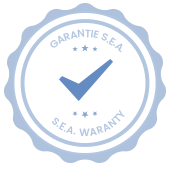Here’s what you need to know if you require a storage container for your business.
Containers come in many types and a number of standard sizes and are usually 20 or 40 feet in length.
Here is a look at seven of the most common types of containers (all are available in 20- or 40-foot lengths unless noted):
Standard: Like the names says, this is the most commonly used container. These are used for general cargo. What makes them popular is they can be used across different methods of transportation, including ship, rail and truck without unloading and reloading cargo.
High Cube: Much like the standard container, the high cube container is generally a foot taller (9-foot-6 as opposed to 8-foot-6) than its counterpart.
Open Top: The main difference between a standard container and open top container is that the latter can be top-loaded. Open top containers are used to carry heavy, tall or difficult to load materials like coal, scrap metal, timber or grain.
Insulated or Thermal: These containers are used for transporting chilled and frozen goods as well as materials and products that are temperature-sensitive. They have insulated walls, but are not refrigerated.
Reefer: These containers are temperature controlled and have a refrigeration unit. They are used to ship perishable goods that need a temperature controlled atmosphere.
Tank: These containers are built to the same dimensions as standard containers, but are cylinder-shaped containers mounted in a rectangular steel framework. Tank containers are typically use to transport liquid or bulk materials.
Flat Rack: Flat racks are often used for items that are too heavy for other containers like pipes and machinery. Flat racks can be collapsible and non-collapsible containers with or without walls.

